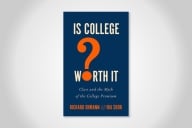You have /5 articles left.
Sign up for a free account or log in.
New York City’s academic community has experienced more than a semester of labor turbulence. In September, after a summer of eschewing all formal contract negotiations, the City University of New York’s faculty union, the Professional Staff Congress, convened a mass meeting to rally support for a strike. Six weeks later, New York University graduate students walked off the job, demanding recognition of a graduate student union, the GSOC.
These strategies do not seem to have paid dividends. The PSC’s plan fizzled amidst widespread faculty ambivalence about (or even opposition to) defying New York State law, which prohibits strikes by public employee unions; a settlement on terms well short of the union’s “non-negotiable” demands appears imminent. At NYU, President John Sexton recently stated that striking graduate students would not receive 2006 teaching assignments; some of those who started off on picket lines have returned to their jobs. In retrospect, PSC and GSOC leaders probably erred in their hard-line rhetoric and actions. But the two organizations also illustrate -- if in an exaggerated fashion -- some of the pitfalls associated with academic unionization.
Supporters of the PSC and GSOC attribute the unions’ difficulties to broader political, societal, and economic forces. The union movement has found George W. Bush an implacable foe. Organized labor is divided -- as seen in the departure of SEIU and related unions from the AFL-CIO -- and has struggled to organize new workers. Pressures from globalization have rendered obsolete the types of union contracts common in the 1950s or early 1960s.
Yet the nature of the university -- a non-profit institution in which an overwhelmingly pro-labor faculty shares the task of campus governance -- buffers academic unions from many of these national trends. It is for this reason, as supporters have noted, that academic unions have functioned at many public universities without significant controversy, if not for the overall educational good.
Campus organizations, however, also suffer from problems rare in the labor movement nationally. Since few academics enter the profession to become labor activists, those who gravitate toward union service are more likely to fall on the fringes of a professoriate that already is ideologically one-sided. They therefore become particularly susceptible to what Emory University’s Mark Bauerlein has termed the academy’s “ groupthink,” adopting extreme positions that weaken their standing with legislators, alumni, or parents.
Bauerlein contends that one aspect of groupthink occurs when “the members of a group reach a consensus and rarely encounter those who dispute it, [so] they tend to believe that everybody thinks the same way.” The GSOC has discovered how this “false consensus effect” can inadvertently alienate constituencies critical to the union’s success. For instance, the New York Sun reported that as part of its campaign to move classes off campus, the GSOC paid to hold classes in -- of all places -- the U.S. Communist Party’s headquarters. (It is doubtful that this move will help convince any neutral trustees that the union’s views represent a mainstream perspective.) Meanwhile, a pro-strike group of more than 200 professors, Faculty Democracy, threatened to withhold undergraduates’ fall-term grades unless Sexton assigned the strikers to spring-term teaching positions, from which they could then continue to refuse to work. (It seems unlikely that parents of NYU seniors will sympathize with the faculty’s casual willingness to disadvantage their children’s candidacies for admission to professional schools.)
The PSC, meanwhile, has demonstrated another component of groupthink. Cass Sunstein, a law professor at the University of Chicago, has described the " law of group polarization" as a pattern in which deliberation moves ideologically one-sided groups “toward a more extreme point in the direction indicated by their own predeliberation judgments.” Group polarization helps explain a PSC record that has limited the union’s influence by casting the organization as a caricature of out-of-touch tenured radicals. At a meeting of the American Federation of Teachers executive council five weeks after the attacks on the World Trade Center, PSC President Barbara Bowen cast the sole vote against a resolution supporting the U.S. military campaign against the Taliban.In 2004, the PSC’s delegate assembly (unanimously) approved a protest at Colombia's United Nations consulate, bizarrely contending that attacks on Colombian educators were “really designed to crush teachers’ resistance to the same conservative agenda against public education we are fighting in New York.”
As these experiences suggest, academic unions’ difficulties are in many ways self-inflicted. GSOC and PSC members have noticed: Inside Higher Ed recently revealed that the GSOC, whose ranks already excluded most science students, has seen participation in the strike by math students cease, while the latest U.S. Department of Labor figures show that an extraordinary 16.6 percent of the PSC’s bargaining unit has opted out of the union entirely despite a requirement to pay agency fees.
But if campus labor organizations do not always get their way, does higher education suffer as a result? An internal ideological contradiction leads academic unions to impose a structure ill-suited for the academy, one that can even enforce mediocrity. On the one hand, groups like GSOC and PSC have committed themselves to resisting what they term the “corporate university.” (On December 15, the PSC delegate assembly -- unanimously -- approved a resolution hailing the GSOC strike as “the cutting edge of labor solidarity in the face of academic corporatization.”) On the other, the PSC and GSOC have embraced a basic element of the corporate system -- a labor/management model in which a union can represent all workers in particular jobs.
Though appropriate to an assembly line, this vision of the academy suggests that the “work” of all graduate students or professors is essentially comparable -- standing in front of a classroom for a certain number of hours each week, regardless of the quality of the performance or the content of the lecture, and (for professors) engaging in service. This level of expectation, unfortunately, often applies to adjuncts. But it is badly misplaced for graduate students or professors. In such an academy, a union member who focuses on legal philosophy would be as competent to TA a course in aesthetics as a non-union Ph.D. student who specialized in the topic, as the GSOC claims. A professor with 30 years of service but an insignificant publication and teaching record would deserve the same salary as a colleague with similar seniority but multiple prize-winning books and a record of distinguished teaching, as the PSC insists.
The corporate model of a labor/management divide also makes unions like the PSC and GSOC at best imperfect vehicles to protect academic freedom -- and at worst, facilitators of the internal threats to free thought from which the contemporary academy suffers.
A jarring reminder of campus administrations violating academic freedom occurred in 2004 at the University of Southern Mississippi. But most corrupted personnel processes (I speak, in part, from personal experience here) involve primarily the actions of senior faculty members, with “management” only ratifying decisions that “labor” already made.
Such cases produce an inherent conflict of interest, by forcing the union to contest the record of other union members -- often campus leaders or colleagues with longstanding personal or professional relationships with key union members. At CUNY, for instance, the faculty and union leaderships are interchangeable. The chair of CUNY’s Faculty Senate, Susan O’Malley, sits on the PSC’s executive committee; many PSC leaders are in the Senate. Likewise, it’s hard to imagine a certified GSOC aggressively representing a graduate student who filed a grievance against a member of Faculty Democracy.
Even setting aside the ideological or bureaucratic temptation to uphold the campus majorities upon which unions rely for their support, the corporate model can handicap protecting untenured faculty rights. Almost all faculty contracts resolve personnel disputes through arbitration. Unlike lawyers, union grievance counselors must balance an aggressive representation of the individual faculty member against the need to maintain long-term working relationships with the administration’s legal staff. Arbitration systems, moreover, generally are weighted in favor of the employer. While it remains difficult to win a tenure lawsuit, over the last 10 years, courts (perhaps showing less deference to academic self-governance after speech code cases revealed the shortcomings of university legal processes) have increased their involvement in college personnel matters.
Not all academic unions, of course, are as ideologically extreme as the PSC or the GSOC. And the motives behind unionization movements are understandable. Compared to the public universities of two generations ago, faculty workload has increased, even though salaries have risen at a much slower rate than in most private sector jobs. Moreover, outside pressures to cut costs and demonstrate tangible achievements have led some administrations to behave in a more unilateral fashion.
Yet it is dubious that more powerful faculty unions or newly created graduate student unions will correct these problems. As Senator Lamar Alexander informed the Secretary of Education’s Commission on the Future of Higher Education, the “absence of true diversity of opinion” on most campuses -- a status quo to which unions contribute -- represents “the greatest threat to broader public support and funding for higher education.” And, as we’ve seen most recently at the University of Colorado following the Ward Churchill affair, dubious conduct by tenured faculty members -- which unions are committed to defend -- can unintentionally boost the leverage of campus or system administrators. Professors would be better served getting their own house in order and then making the case for higher salaries or more autonomy rather than adopting the corporate model championed by groups like the PSC or GSOC.
At NYU, Sexton deserves credit for putting the integrity of his institution first. And at CUNY, key members of the Board of Trustees have courageously resisted the outlandish demands and frequently bullying tactics of their labor foes. The records of the GSOC and PSC offer textbook examples of how groupthink and the corporate model embraced by academic unions can contradict the basic goals of higher education.








